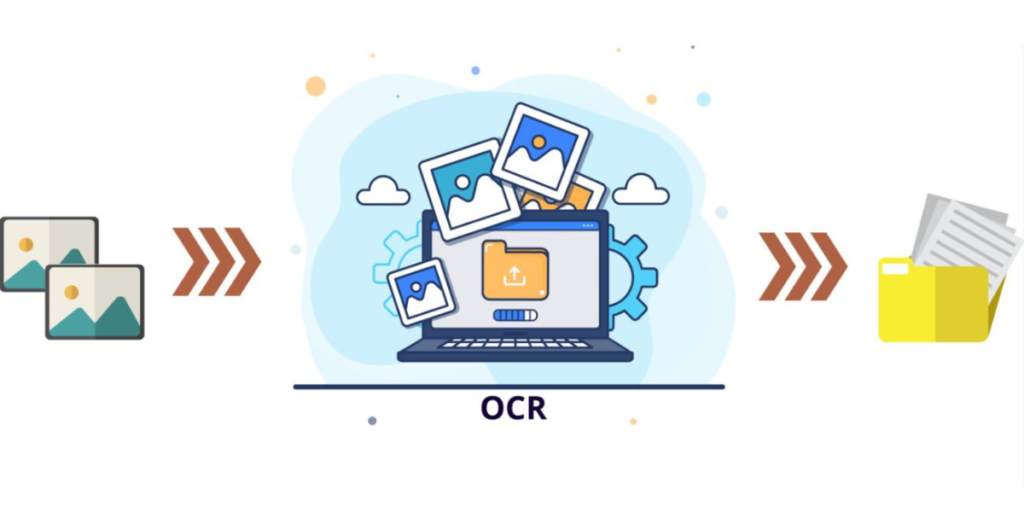The Point: In today’s fast-paced financial landscape, businesses are continually seeking ways to streamline their operations, reduce manual tasks, and enhance overall efficiency. One technology that has gained significant traction in recent years for its transformative capabilities is Optical Character Recognition (OCR). This revolutionary technology empowers organizations to automate text recognition, convert paper documents into digital files, and unleash a myriad of benefits across various finance functions. From processing invoices to expense reporting and auditing, OCR has become an indispensable tool in modern finance departments. In this article, we will delve into the ins and outs of OCR technology and unveil its potential to revolutionize finance as we know it…Enjoy!

Understanding OCR Technology
Optical Character Recognition (OCR) is a sophisticated technology that enables the conversion of various types of documents, including receipts, invoices, credit cards, and ID cards, into machine-readable and easily searchable digital files. Through the use of advanced algorithms, OCR can accurately recognize and interpret characters and symbols present in scanned images or photographs of text-based documents. This breakthrough technology eliminates the need for manual data entry, saving time and resources while significantly reducing the risk of errors.
OCR in Finance: Common Use Cases
In the financial domain, OCR finds extensive applications that streamline critical processes and enhance productivity. Some of the most common use cases for OCR in finance include:
- Streamlining Accounts Payable Processing
OCR technology revolutionizes the way organizations process invoices and manage accounts payable. By automatically capturing and interpreting invoice data, OCR systems can significantly reduce the time and effort spent on manual data entry. This expedites the entire accounts payable cycle, from invoice receipt to payment, and ensures prompt and accurate processing.
- Automating Expense Reporting
Expense reporting can be a time-consuming and error-prone process, but with OCR, employees can effortlessly scan receipts, and the system can automatically extract relevant information such as date, vendor, and amount. This seamless automation eliminates the hassle of manual expense reporting, improves accuracy, and allows employees to focus on more strategic tasks.
- Enhancing Auditing Procedures
Auditing is a critical function in finance that demands precision and thoroughness. OCR technology aids auditors by converting paper-based financial documents into searchable digital files. This enables auditors to efficiently analyze vast volumes of data, identify anomalies, and ensure compliance with regulatory standards.
The OCR Process: From Image to Data
The OCR process involves several key steps to ensure accurate text recognition and reliable data extraction:
- Image Pre-processing – Before OCR can commence, image pre-processing is performed to enhance the quality of the scanned documents. This step may involve tasks such as noise reduction, contrast enhancement, and image rotation to optimize the readability of the document.
- Segmentation – Segmentation involves dividing the document image into individual sections, such as paragraphs, lines, and characters. This segmentation process ensures that the OCR system can recognize and interpret each component accurately.
- Character Recognition – Character recognition is the core of OCR technology. Advanced algorithms analyze the segmented image and match the patterns to recognized characters, converting the image into machine-readable text.
- Post-processing – After character recognition, post-processing techniques are employed to refine the extracted text and minimize errors. This stage involves spell-checking, contextual analysis, and formatting adjustments to ensure data accuracy.
The Benefits of OCR in Finance
The integration of OCR technology in finance brings forth a host of benefits that contribute to enhanced efficiency and improved decision-making:
Scalability and Quick Digitization
OCR enables rapid digitization of large volumes of documents, making it highly scalable for organizations of all sizes. This quick digitization allows businesses to access critical data instantaneously and fosters faster decision-making.
Increased Accuracy and Reduced Errors
OCR systems have achieved remarkable levels of accuracy, often reaching up to 99% or more. The reduction in manual data entry significantly minimizes the risk of errors, ensuring reliable and trustworthy data for financial analysis and reporting.
Fast Turnaround Time
By automating time-consuming tasks, OCR accelerates the processing time of financial documents. This fast turnaround time leads to improved cash flow management, timely payments, and enhanced customer satisfaction.
Reduced Risk and Improved Compliance
OCR enhances data security and reduces the risk of sensitive financial information falling into the wrong hands. Additionally, by ensuring accurate and consistent data extraction, OCR supports regulatory compliance and audit readiness.
Best Practices for Implementing OCR in Finance
To maximize the benefits of OCR technology in finance, organizations should consider implementing the following best practices:
1 – Document Assessment
Before implementing OCR, conduct a thorough assessment of the types of documents that will be scanned and their respective formats. Understanding the variety of documents and their specific requirements will help in selecting the appropriate OCR solution.
2 – Image Review Before Scanning
Prior to scanning, review the quality of the images to be processed. Ensure that the documents are clear and well-aligned to enhance the accuracy of OCR results.
3 – Selecting the Right OCR Software
Invest in a reliable and proven OCR software that aligns with your organization’s specific needs. Consider factors such as data security, scalability, and compatibility with existing systems.
4 – Process Optimization
Look for opportunities to optimize finance processes through OCR. Focus on areas like expense reimbursements, bill payments, and invoice processing to achieve maximum efficiency gains.
SUMMARY
OCR technology has emerged as a game-changer in the world of finance, offering a multitude of benefits that drive efficiency, accuracy, and strategic decision-making. From streamlining accounts payable to automating expense reporting and improving auditing procedures, OCR empowers finance departments to transcend the limitations of manual processes and embrace a future of innovation and optimization. By adopting best practices and leveraging OCR’s transformative capabilities, organizations can unlock untapped potential, gain a competitive edge, and redefine their approach to financial management. As the landscape of finance continues to evolve, OCR remains an indispensable tool in the journey towards a more agile, data-driven, and successful future.
Sam Palazzolo, Managing Director @ Tip of the Spear Ventures


